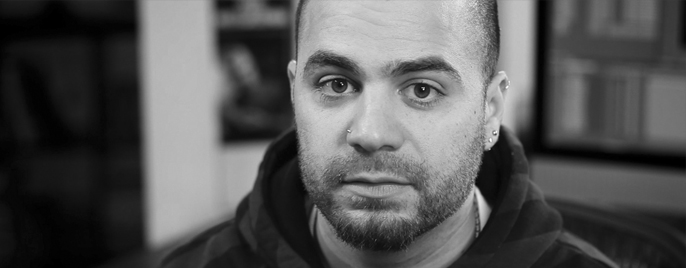What was your favourite part of working on Trafficked - The Reckoning?
The reason I got into filmmaking was to make documentaries and to get the opportunity to work on films about social justice is a real privilege. What I found special about working on ‘Trafficked – The Reckoning’ was the time that was afforded us to complete the edit. While not intentional, the production and post spread to over 10 months. We had expected to finish the investigation into the former brothel owner much sooner than we did and so the post was spread out. What it allowed to happen was a very thorough examination of all the material we had and so we could explore possible storylines more fully.
What was it like editing a project that was changing continuously as leads became dead ends or of far more importance than first thought?
In some ways it was frustrating. We were often working on scenes that we thought were quite important to the investigation and the film and often they became obsolete. This happens on all documentaries, there are always scenes that you think are important to the narrative or the character development and then when you look at the big picture or time restraints start coming in to play and you have to lose them. What was challenging with ‘The Reckoning’ was understanding that much of what we were cutting would change every time Luigi would shoot with Chris or that investigations that Chris was carrying out independently would alter everything that came before or after that point in the film. And then we had the added challenge of trying to establish how important a new lead could be and whether we were going to have enough screen time to fully realise that new detail.
This documentary continues following the story of freed sex slave, Ning. How did you balance Ning's story with that of the former police officer Chris Payne?
The film plays out over two main parts, Thailand and Australia. In the first part, Chris travels to Thailand to meet Ning and begin the investigation. This is where the audience discovers the path Ning’s life has taken since we first met her in the SBS documentary ‘Trafficked’. It was important to establish both Ning individually and the relationship between Ning and Chris as the second part takes place in Australia and essentially sees Chris undertake a long and mostly solitary investigation. Without having established Ning, her motivations and her unique strength of will, it would be hard to ask an audience to stay with Chris through the investigation. That being said, Chris is an engaging and powerful character himself and I think audiences will really want to see him succeed for not only Ning’s sake but for his own sense of closure.
During the final month of the shoot you were editing and filming the surveillance with director Luigi in the hopes of finding the brothel owner. Did that pressure cooker environment add to the visceral nature of the documentary?
I think it did. While we had great support from SBS, in that we all wanted to find the brothel operator, we also had real time, budget and resource limitations. As each new lead uncovered had an immediate impact on the story, it was important to be able to integrate this new footage quickly and to assess the impact on the story overall. Being part of the surveillance with Luigi and Chris and actually being there when we found the brothel operator allowed me to experience the tension that I think we have captured in this film first hand. I remember my heart pounding when the brothel operator’s car arrived, and I remember feeling the same sense of anxiety when we first cut that scene together in the edit suite. Being part of the shoot helped me understand how Chris might have been feeling and how we wanted the audience to feel at these pivotal moments in the film.
What would your tip be for editors working with personally emotionally impacting footage?
I think the most important thing was to allow myself to be affected by the footage. Perhaps later as we reworked various scenes I could remove myself from the emotion, but initially it helped to stop being a filmmaker and allow myself to experience Ning’s story. In the beginning Luigi and I would independently edit loose assembles of scenes that were going to be hard emotionally. We’d then view the assembles on our own and together discuss them when we’d taken it in and could start putting the story together, knowing full well what the emotional impact was likely to be on the audience.
